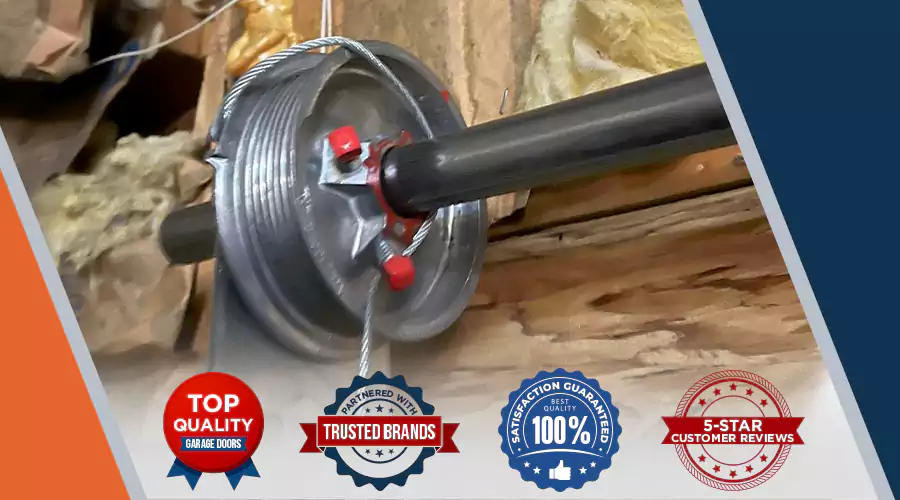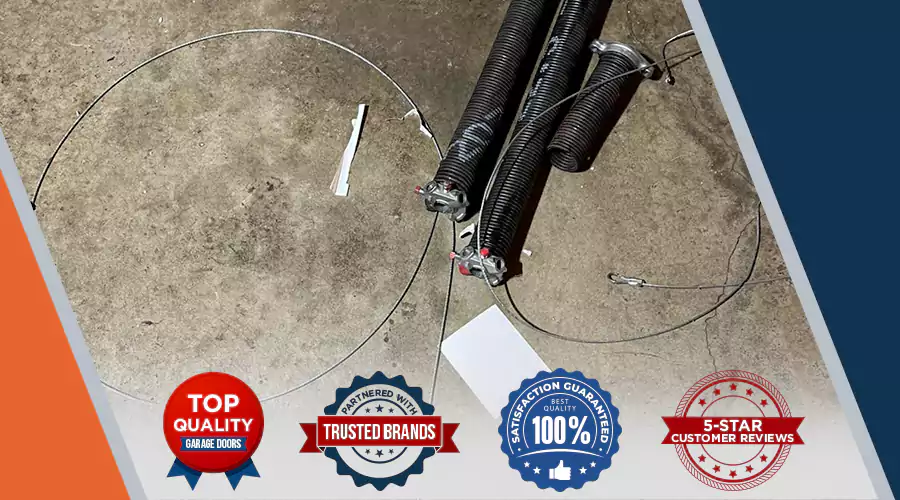Los Angeles
Change Location (50+)
(50+) Replacing garage door cables is a critical maintenance task that ensures the smooth and safe operation of your garage door. Over time, these cables can deteriorate, fray, or break, posing potential safety hazards. In this comprehensive guide, we’ll walk you through the process of how to replace garage door cables safely and efficiently.
Whether you're a DIY enthusiast or a homeowner seeking to reduce repair costs, this article will help you learn the required tools, security concerns, and detailed instructions for changing garage door cables.
Learning about garage door cable functions forms the basis of effective repair procedures. The combination of cables and springs functions jointly to operate the garage door in its up and down movements. The heavy tension and weight the cables bear makes the entire system unstable when something goes wrong. A snapped cable will produce three noticeable problems or symptoms.
Early detection of these symptoms will help both save time and minimize spending costs. When your garage door cable snaps or falls off it is necessary to start your repairs.
| Symptom | Possible Issue |
|---|---|
| Cables off track/drum | Misalignment or loose components |
| Frayed or snapped wire | Excessive wear or tension failure |
| Grinding noises | Cable rubbing against metal parts |
| The garage door feels heavier | Broken tension cable or spring issue |
You must inspect garage door cables when you detect any of these problems.
Simple cable attachment repairs to the drum become possible for those who are interested in do-it-yourself projects. Professional help is required to fix both broken garage door cables and garage door tension cable repairs. Any repair work should begin with an assessment for complexity level.
Before starting, gather the following tools:
| Tool | Purpose |
|---|---|
| Adjustable Wrench | Loosening and tightening bolts |
| Vise Grips | Securing torsion springs |
| C-Clamps | Stabilizing the garage door |
| Pliers and screwdrivers | Hold parts, tighten or loosen |
| Socket Set | Removing cable drums |
| Ladder | Accessing high components |
| Winding bars | Apply tension to torsion springs |
| New Garage Door Cables | Replacement parts |
| Trolley lock or vice grips | To secure the garage door |
| Safety Gloves & Glasses | Protection from injuries |
Working with garage door cables involves high tension and potential risks. Follow these safety measures:

Now that you’ve gathered all the necessary tools and taken safety precautions, it’s time to replace the garage door cables.
Before working on the garage door cables, you need to release the tension on them. This is the most critical part of the process, as the wires are under a lot of tension, and handling them without releasing this tension can be hazardous.
Once the tension has been released, it’s time to remove the broken cable:
Now that the old cable is out, it’s time to install the new one. Be sure to purchase the correct replacement cables that match your garage door's specifications. To install the new cable, do the following:
After installing the new cable, you’ll need to reapply tension to the system. Here’s how to do it safely:
With the new cables in place, it’s time to test the garage door. Here’s what to do:
Certain types of garage doors may require specialized cable services:
If your roll-up garage door isn’t functioning properly, roll-up garage door cable services can restore smooth operation. Professionals have the experience required to handle the particular problems that are specific to roll-up doors.
When dealing with an up-and-over garage door, check the bottom brackets and springs before replacing the cables. This ensures the garage door operates correctly and without issues.
Sometimes, a cable doesn’t snap; it just slips off the drum. Here's how to repair it in such situations:
This simple fix can save you both time and money!
| Issue | Solution |
|---|---|
| The garage door cable snapped | Replace immediately to avoid an imbalance |
| The cable came off the pulley | Realign and tighten set screws |
| Frayed or worn cables | Replace before complete failure |
| Garage Door Pulley Wire Broke | Replace the broken wire and check the pulley alignment |
| Garage Door Drum Repair | Ensure the drum is properly aligned and the cable is wound correctly |
| Grinding noises | Lubricate pulleys and check alignment |
While replacing garage door cables is a manageable DIY task, some situations require professional help:
Hiring a professional ensures safety and proper installation.
| Repair Type | Estimated Cost |
|---|---|
| DIY Cable Replacement | $30–$50 (parts only) |
| Professional Service | $100–$300 (labor included) |
Investing in quality garage door cable repairs prevents frequent breakdowns.
To avoid frequent repairs, consider implementing a maintenance routine:

Knowing how to replace garage door cables can save time and money. But safety should always come first, especially when working with high-tension springs. If in doubt, consult a professional for garage door cable services to ensure a long-lasting fix.
By following this guide, you can maintain a smooth, safe, and reliable garage door system for years to come.